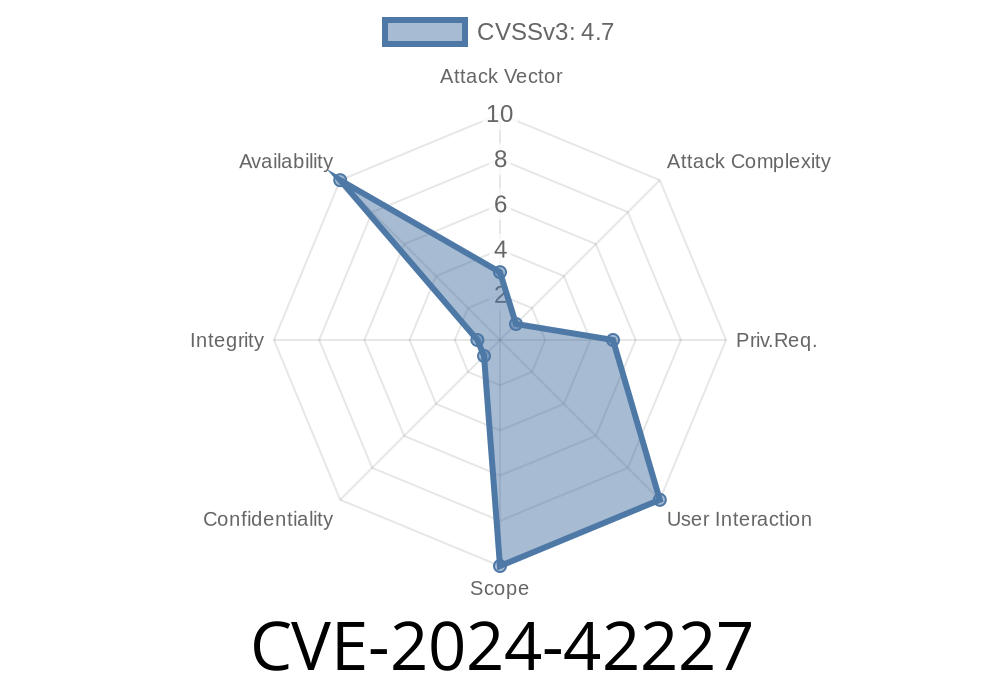Introduction: Linux Kernel Vulnerability Background
In the Linux kernel, a vulnerability was recently discovered, which is now registered as CVE-2024-42227. This security issue is associated with the drm/amd/display component, specifically dealing with overlapping copy within dml_core_mode_programming. The following article will explore the nature of this vulnerability, provide links to original references, and discuss the details of the exploit.
Code Snippet: The Vulnerability
The issue occurs within the Linux kernel's Direct Rendering Manager (DRM) for the AMD display driver. The problematic code is referenced below, displaying the use of memcpy that may lead to unexpected behavior:
void dml_core_mode_programming(struct display_mode_lib *mode_lib)
{
// ...
locals.Watermark = mode_lib->mp.Watermark;
memcpy(&mode_lib->mp.Watermark, &locals.Watermark, sizeof(mode_lib->mp.Watermark));
// ...
}
As demonstrated, the &mode_lib->mp.Watermark and &locals->Watermark point to the same memory address. When memcpy is used in this situation, it can result in undefined behavior since a source and destination memory location overlap.
Original References: Official Documentation
The Linux kernel mailing list contains official documentation of this vulnerability and further discusses the problem in depth:
1. LKML announcement: https://lkml.org/lkml/2024/11/13/1086
2. CVE Details: https://cve.mitre.org/cgi-bin/cvename.cgi?name=CVE-2024-42227
Exploit Details: Dangerous Consequences
The vulnerability can have serious consequences for both security and system stability. An attacker can potentially exploit the overlapping copy issue, causing unexpected behavior in the system, including corruption, crashes, and possibly compromising sensitive data. As a result, it becomes necessary to address this vulnerability with a secure fix.
The Fix: Using memmove
To prevent any security risks and resolve the CVE-2024-42227 vulnerability, the memcpy function within the code should be replaced with the use of memmove. Memmove is similar to memcpy, but it can handle overlapping source and destination memory regions properly:
void dml_core_mode_programming(struct display_mode_lib *mode_lib)
{
// ...
locals.Watermark = mode_lib->mp.Watermark;
memmove(&mode_lib->mp.Watermark, &locals.Watermark, sizeof(mode_lib->mp.Watermark));
// ...
}
With the change from memcpy to memmove, the vulnerability is now effectively patched, and the Linux kernel is once again secure from this potential exploit.
Conclusion: Protecting the Linux Kernel
The Linux kernel is at the heart of many systems today, from servers to personal computers. Ensuring its security and stability is crucial to protect the sensitive data and maintain high-performance systems. The swift identification and resolution of vulnerabilities like CVE-2024-42227 are key to safeguarding the digital assets of millions of users worldwide.
Timeline
Published on: 07/30/2024 08:15:07 UTC
Last modified on: 07/30/2024 20:15:03 UTC
